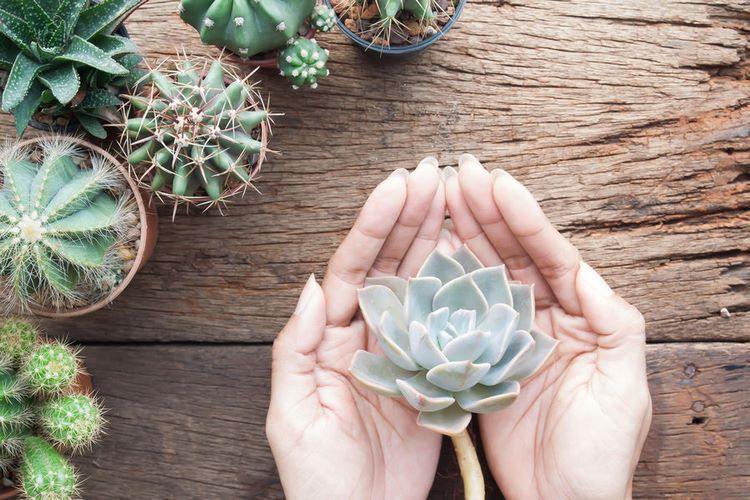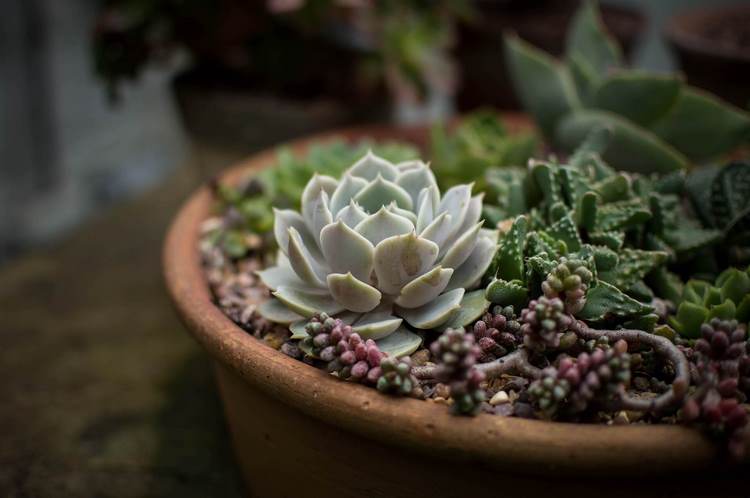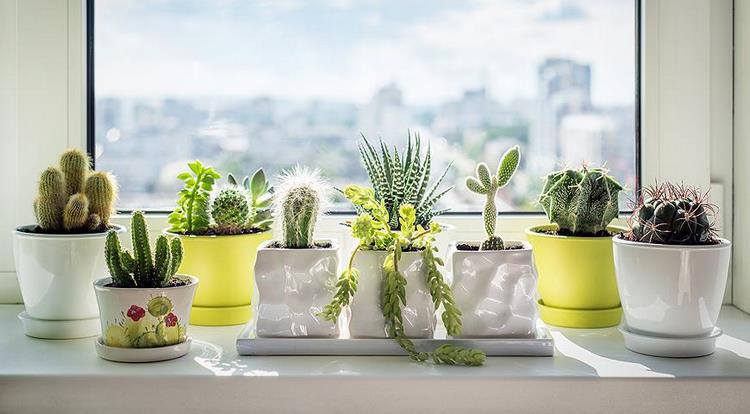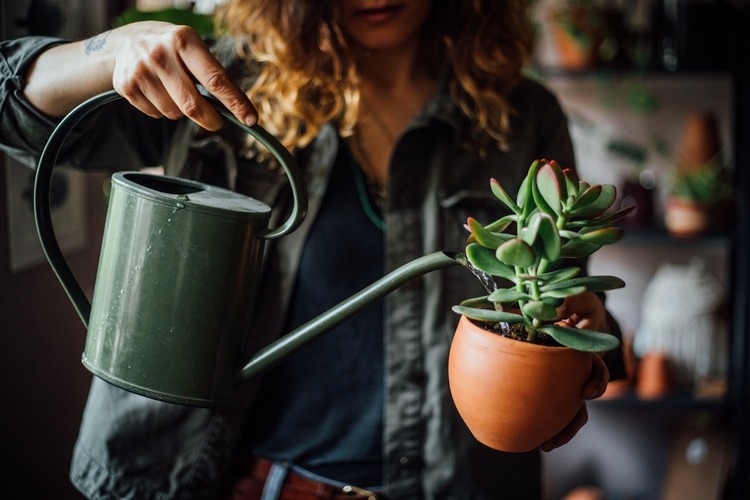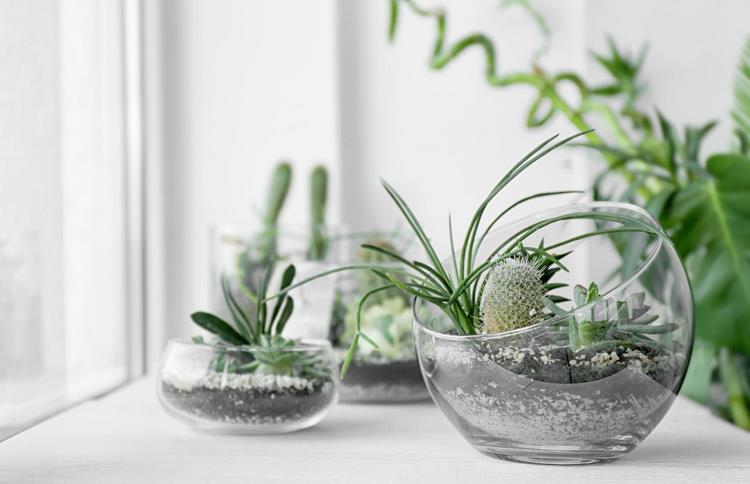How to care for succulents at home? These little plants are really amazing and you have surely seen fantastic indoor and outdoor succulent garden designs. Why are they so popular as house plants? On the first place because they are easy to care for, they do not occupy a lot of space and unlike other domestic flowers they do not require frequent watering due to their ability to store water for a long time.
In addition, succulents are unpretentious plants and it is believed that anyone can take care for them. They grow slowly and are compact which makes them the perfect windowsill decoration. The smallest plants grow up to 5 centimeters.
Another huge advantage of succulents is that they vary in shape and appearance. The group is incredibly diverse and includes about 800 species. There are species with magnificent picturesque flowering or fruits and even during the non-flowering period, the exotic beauty of succulents attracts attention.
How to care for succulents at home – step by step guide for beginners
Succulents are a great alternative to traditional house plants in flower pots. There are numerous DIY mini garden ideas which add a beautiful accent to the home interior and decor. Of course, you need to know how to care for succulents, as they may be unpretentious but still require some attention.
Finding the best succulents that suit your taste or your interior is not difficult. Here is a short list of the most popular and accessible species:
- Pincushion Cactus (Mammillaria crinita)
- Aloe Vera (Aloe vera)
- Christmas kalanchoe (Kalanchoe blossfeldiana)
- Roseum (Sedum spurium)
- Zebra Plant (Haworthia fasciata)
- Hens-and-Chicks (Sempervivum tectorum)
- Stonecrop (Sedum spp.)
- Plush Plant (Echeveria pulvinata)
- Jade Plant (Crassula ovata)
- Burro’s Tail (Sedum morganianum)
- Pig’s Ear (Cotyledon orbiculata)
- Moonstones (Pachyphytum oviferum)
- String of Buttons (Crassula perforata)
- String of pearls (Senecio rowleyanus)
- Bear’s Paw (Cotyledon tomentosa)
- Pebble plant or living stone (Lithops)
Also read: Does Kalanchoe Fear Cold? How to Overwinter It & Ensure New Blooms?
How to care for succulents at home – Light and air
Succulents need light and air. Do not forget that these are desert plants, and in their natural habitat there is a large amount of sun. The closer to their native climate conditions you manage to create, the more comfortable the succulents will feel in your home. It is obvious that during summertime and winter months your flowers will get different amount of light, which means that you need to keep in mind the period of the year. Keep in mind that despite the fact that they love an abundance of light, not all species have the same attitude to direct sunlight. Direct rays are required only in the morning and in the evening. It is better to remove your plants from the windowsill for the cold period of the year because it gets quite cold near the window and low temperatures are not beneficial to succulents.
How to water succulents?
Succulents do not like water, so they do not require frequent watering. During summer they will need regular watering, but only when the soil in the pot is completely dry – 2 times a week. By the end of September watering is reduced. Winter is a time for rest. Moisture has accumulated in the stems and leaves of the succulents so you have to be very careful and not water your plants, especially at low temperatures as they may die. Two times a month is quite sufficient if the temperature does not go below 10-14°C. If temperature is 6-9°C, you can water your succulents once every 2 months.
What is the best soil for succulents?
Having in mind that the soil in the natural habitat of succulents is sand or a mixture of sand and gravel, you need soil that does not retain water and has good aeration. If you are a beginner it is best if you get a ready-made soil mixture from the store and take care to provide a good drainage. If you want to make your own mixture you need sand, gravel, brick chips. Activated carbon can be added to the soil as it makes it looser and draws impurities out of the water.
Do you need to fertilize your succulents?
In general succulents do need much fertilizer. If you want to fertilize your plants, the best time to do that is in the spring and once again in late summer. Make sure you add very little fertilizer. If you add too much the nutrient boost may cause rapid growing. Choose a water-soluble fertilizer, preferable organic.
How to keep succulents free of pests and diseases?
Succulents may be attacked by a variety of pests – from mealy bugs to spider mites, to aphids, gnats, etc. To prevent such attacks, you need to make sure your plants are healthy and strong. Always remove dead leaves as this is the place where bugs hide. When the soil is wet you may encounter two problems. The first one is the appearance of mold and the second one is the appearance of bugs. That is why it is important to keep the soil dry. If the problem persists, use pesticides which will deter or kill the bugs and other pests in your succulents. It is advisable to spray or brush the plants with a systemic pesticide. They come concentrated and should be diluted in water. These pesticides are absorbed into the roots of the plant and will poison the bugs that feed on the leaves.
Finding spots or mold on the flower leaves, you need to immediately cut off the affected leaves. Mold is caused by overwatering or watering with spray bottles. Make sure that the soil is dry before you water the plant and avoid spray bottles.
If your succulents are rotting, this is usually as a result of a dense soil. Dense soil does not dry quickly and your plant suffers.
Insufficient light leads to color loss. Usually the leaves turn light green or lose its color. You need to move the succulent to a place where it will get at least six hours of sunlight every day.
Follow these simple rules to keep your plants healthy and happy:
- Do not allow a lot of moisture in the soil. Plants must be watered when the soil is dry.
- When propagating, add active charcoal to the soil.
- Make sure to provide drainage at the bottom of the plant container.
- Observe the correct watering schedule in winter.
- Propagate only in the spring, and before planting, allow the cuttings to dry.
- Keep the plants in a well-lit place.
How to propagate succulents?
Succulents are usually transferred into new soil in the spring. It is advisable to do that once a year for young plants, for adults – once every 2-3 years. You must not propagate succulents during the appearance of buds and flowering. There are two main methods of propagating succulents – with leaf cutting and with offshoots. Keep in mind that unlike other plants, offshoots and leaves of succulents cannot be put in water, they will rot. The shoots (leaves) must first be dried for three – four days before being planted. In a couple of weeks, the young flower will take root.
Propagating succulents with leaf cuttings is very easy. You need to cut a leaf below the main flowering place. Leave the leaf in a dry place and let it dry for a few days. When the leaf is dry it is ready to be planted.
Make sure you use well-draining or succulent soil and a pot with suitable drainage. Set the leaf on top of the soil and leave it for several weeks. Water it once a week and be careful to avoid overwatering. Monitor when roots will appear and when this happens, carefully remove the parent leaf without damaging the new roots.
Propagating succulents with offshoots
Many succulents develop offshoots at the base of the plant. This is an easy way to propagate because all you need to do is gently cut the offspring and allow the offshoot to develop roots for a period of 2-3 weeks.

